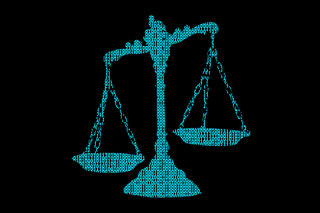
U.S. White House Releases Blueprint for an ‘AI Bill of Rights’
The document stresses on the importance of protecting Americans from the excesses of tech, but ignores how R&D creates global inequalities.

This week, the U.S. White House released a set of non-binding guidelines to govern the use of artificial intelligence and tech. In its ‘Blueprint for an AI Bill of Rights,’ the government laid out principles designed to protect Americans from the excesses of tech. “The Blueprint for an AI Bill of Rights is a guide for a society that protects all people from these threats — and uses technologies in ways that reinforce our highest values.” But there’s a fundamental gap in the framework: it treats AI as geographically bound to the sovereign territory of the U.S. That’s not the case.
There are five principles that the Bill espouses: safe and effective systems; algorithmic discrimination protections; data privacy; notice and explanation; and human alternatives, consideration, and fallback. “This purposefully overlapping framework, when taken as a whole, forms a blueprint to help protect the public from harm,” the document notes — but it’s not just the American public that’s harmed by AI. This leads to more questions than we have answers for. AI’s impact on the world is split across geographical lines; while most research and development (R&D) takes place in the global north, it disproportionately impacts the global south. Touted as an emerging solution for problems like poverty, hunger, and even medicine, AI is poised to take over in jurisdictions that never developed the tools to control it in the first place.
“The potential financial advantages of AI are so great, and the chasm between AI haves and have-nots so deep, that the global economic balance as we know it could be rocked by a series of catastrophic tectonic shifts,” noted a report from the Stanford Institute for Human-Centered AI (HAI).
We’ve seen this happen before with unregulated big tech megaliths like Facebook — considered responsible for stoking genocide in Myanmar, and inciting riots in India, among other things.
“Ultimately, the development of AI technologies for but not by developing countries can only further amplify existing oppression and biases,” say experts. Take the fact that Natural Language Processing (NLP) systems take language and convert it into data that machines can understand. But whose language is embedded into the system?
Related on The Swaddle:
How Facial Recognition AI Reinforces Discrimination Against Trans People
“… if we don’t harness it responsibly and share the gains equitably, [AI] will lead to greater concentrations of wealth and power for the elite few who usher in this new age — and poverty, powerlessness, and a lost sense of purpose for the global majority,” Google Cloud chief AI scientist Dr. Fei-Fei Li told Venture Beat. It speaks to how tech is the new frontier for power — and this power is distributed geographically. It transcends state sovereignty, and this creates inequalities in terms of who develops the technology versus who is impacted by it. “… if these players are predominantly located in economic powerhouses like the U.S., China, and the E.U., a disproportionate share of economic benefit will fall inside of these regions, exacerbating the inequality.”
The world’s most valuable resource isn’t oil anymore — it’s data. And much like how oil drove into motion geopolitical conflicts with disproportionate impacts, AI becomes a tool to harness data in a way that gives greater power and control to a few individuals and entities — most of whom are located in the global north. Take, for instance, the fact that AI is increasingly deployed in border control — a racist use of technology that surveils and disciplines migrants from poorer countries.
It also takes for granted that AI is necessary. “We can’t articulate a bill of rights without considering non-deployment, the most rights-protecting option,” Annette Zimmermann, who researches AI, justice, and moral philosophy at the University of Wisconsin-Madison, told Wired. The European Union is embroiled in a debate about banning some uses of AI altogether — such as in the form of lie detectors at borders.
Moreover, there’s a bigger problem at play: data. AI relies on datasets. When AI is developed in the global north, the datasets it relies on are Eurocentric. As a result, the same machines trained on these datasets perform worse when introduced to datasets from the global south, according to reports. “Even with long-term investment into regions in the Global South, the question remains of whether local residents are provided opportunities to join management and contribute to important strategic decisions,” noted one study. While AI research centers are spread out globally, most of the people working on AI are concentrated in the U.S.
The Bill then treats AI as a public concern, but without reigning in big tech’s hold over the world itself. “It has no power over the large tech companies that arguably have the most power in shaping the deployment of machine learning and AI technology,” as Wired noted.
Rohitha Naraharisetty is a Senior Associate Editor at The Swaddle. She writes about the intersection of gender, caste, social movements, and pop culture. She can be found on Instagram at @rohitha_97 or on Twitter at @romimacaronii.
Related


How Dormant Bacteria Spores ‘Return to Life’
